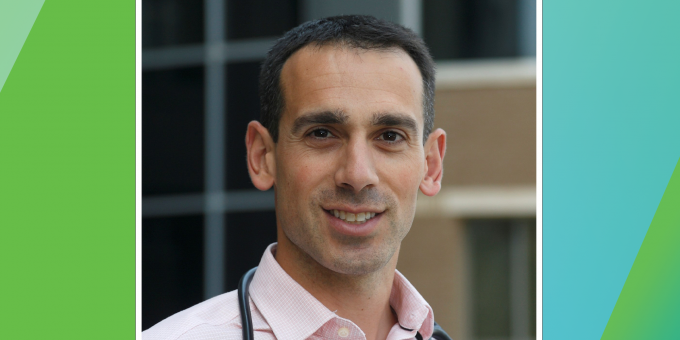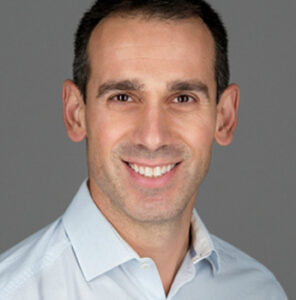Dr. David Palma talks about ORATOR, the first published trial comparing quality of life outcomes between treatment options for cancers of the throat and back of the tongue.
The demographics of oropharyngeal squamous cell carcinoma (OPSCC) have shifted dramatically in recent years, with much younger people commonly diagnosed with these cancers of the throat and back of the tongue.
This has made considerations of long-term quality of life even more important. It has also led to spirited clinical debates about treatment options, says Dr. David Palma, an OICR Clinician Scientist and radiation oncologist at London Health Sciences Centre (LHSC).
Patients with oropharyngeal cancers are usually treated with either radiation or surgery. And while both have very high cure rates, both are associated with potentially lifelong side effects.
So Dr. Palma – a radiation oncologist – and his LHSC colleague Dr. Anthony Nichols – a head and neck surgeon – led a randomized trial to compare both treatments’ long-term impact on quality of life. The ORATOR trial ran for about four years and enrolled a total of 68 patients. Long-term results were recently published in the Journal of Clinical Oncology, and Dr. Palma spoke with OICR News about what he and Dr. Nichols found.
Tell us about how the demographics of oropharyngeal squamous cell carcinoma (OPSCC) have changed recently.
In the past 15 or 20 years, we’ve seen a large increase in cases of cancer of the oropharynx, and it’s due to an epidemic of the human papillomavirus virus (HPV). Traditionally, most patients with OPSCC were around 70 years old and often had major exposure to alcohol or tobacco. Now, many patients are in their 40s, 50s and 60s, and they are often non-smokers. It’s a whole different population.
How has this changed conversations around treatments?
The historical treatment has been radiation, and the good news is these cancers are extremely curable. If you’re a non-smoker with an HPV-related cancer, your chance of cure might be around 90%. But treatment can be very, very difficult on patients. Radiation can give people dry mouth, difficulty with taste, difficulty with swallowing. Sometimes people may need a feeding tube. For this new population of younger patients, they might have to live a long time with these side effects.
How did the ORATOR trial come about?
The biggest development in this area in recent years was the advent of transoral robotic surgery (TORS), which allows a surgeon to remove a tumour more easily than older surgical methods. As TORS became more popular in the U.S., there were studies suggesting that maybe it was a better approach than radiation.
At the same time, radiation was improving so that we could be much more precise and avoid damaging normal tissue like the saliva glands.
So, we had these two possible treatments and we didn’t always know which one was best. And in medicine, you don’t really know which treatment is best until you do a randomized trial.
How was quality of life measured in the trial?
We measured swallowing function through patient surveys. Swallowing is the main thing that can be negatively affected by these treatments, and so besides curing the cancer, our priority with treatment is to maximize a person’s swallowing ability.
What did trial show about radiation versus surgery?
The first finding is that both treatments were very good at treating cancer. Long-term survival was quite good regardless of whether patients had surgery or radiation.
Both groups also reported good swallowing function. Results were a little bit better with radiation, which was actually contrary to what I expected. But the difference didn’t meet the definition of what would be a clinically significant change. Over time, we found that cure rates remained very good and the differences in swallowing function between the two treatments became less prominent.
What are your main takeaways from these results?
Our findings were reassuring that both treatment options are good at curing cancer and provide good outcomes for patients.
They do however have different side effect profiles which can be discussed between physicians and patients. Since this is the only published trial comparing surgery and radiation for these cancers in a randomized fashion, it gives us a lot more information to come to a shared decision with our patients on which treatment is best.
What’s next for this research?
Our next step is to explore what we call de-escalation, which means reducing the intensity of the treatment to try and improve quality of life while preserving the high cure rates.
We recently completed a study called ORATOR 2 to compare surgery and radiation as part of a de-escalation approach. The results have been reported and should be published soon.


